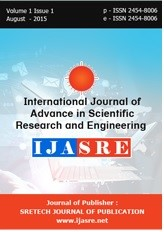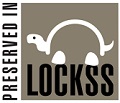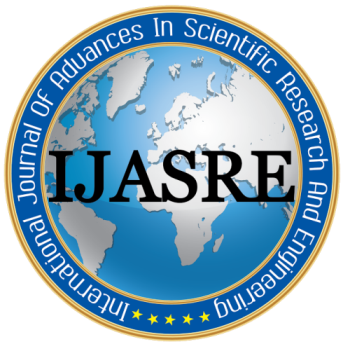Modelling the Dependency of a Non-Steady Diffusion on Temperature of a Conductive Material
DOI:
https://doi.org/10.31695/IJASRE.2020.33896Keywords:
Numerical Simulation, Thermal diffusivity, Temperature, Concentration, Activation EnergyAbstract
The concentration of a diffusing species is a function of both time and position, u = u(x,t). The species used in this paper was a copper which was allowed to diffuse into a bar of copper (a host metal). The analytic method was used to establish the concentration of the material with the independent variables x and t.The effect of temperature on concentration and the thermal diffusivity of a material D were determined using numerical simulation. The results were showed on diverse plots at different temperatures.
References
C. Gomez, K. Bosecker (1999). Leaching Heavy Metals from Contaminated Soil using Thiobacillus Ferrooxidans or Thiobacillus thiooxidans. J. Geomicrobiol, 16, 233-244.
C. Green-Ruiz, V. Rodriguez- Tirado, B. Gomez-Gil (2008). Cadmium and Zinc Removal from Aqueous Solutions by Bacillus Jeotgali: pH, Salinity, and Temperature Effects. Bioresour. Technol. 99, 750-762.
Davis, RA, AT Welty, J Borrego, JA Morales, JG Pendon, JG Ryan, 2000. Rio Tinto estuary (Spain): 5000 years of pollution. Environmental Geology 39(10): 1107-1116.
Dr. Carol Ann Woody & Sarah Louise O’Neal (2012). Effects of Copper on Fish and
Aquatic Resources. Fisheries Research and Consulting in Anchorage, Alaska.
E. A. Brandes and G.B. Book (Editors), Smithells Metals Reference Book, 7th Edition, Butterworth-Heinemann, Oxford, 1992.
Effect of Temperature. Retrieved from https://courses.lumenlearning.comcheminter/chapter/effect-of-temperature on Thursday
th August 2020.
G.W. Meetham (1991). High- Temperature Materials- a general review. Journal of Materials Science 26, 853-860.
Helmut Mehrer, Nicolaas A. Stolwijk (2009). Heroes and Highlights in the History of
Diffusion. The Open-Access Journal for the Basic Principles of Diffusion Theory,
Experiment and Application, 1, 1-32.
Hu Wen, Jun-hui Lu, Yang Xiao, Jun Deng (2015). Temperature Dependence of Thermal Conductivity, Diffusion, and Specific Heat Capacity for Coal and Rocks from Coalfield. Therochimica Acta, 619, 41-47.
Jean Philibert (2006). One and a Half-Century of Diffusion: Fick, Einstein, Before and
Beyond The Open-Access Journal for the Basic Principles of Diffusion Theory,
Experiment and Application, 4, 1 – 19.
John E. Aston, William A. Apel, Brady D. Lee, Brent M. Peyton (2010). Journal of Hazardous Materials, 184, 34-41.
Kendall Atkinson, Weimin Han, David Stewart (2009). Numerical Solution of Ordinary Differential Equations, A John Wiley & Sons, Inc., Hoboken, New Jersey, pp. 131.
Khadom, A . A., Yaro, A. S., Abdul Amir H.k., Ahmed S. AlTaie, Ahmed Y. Musa
(2009). The Effect of Temperature and Acid Concentration on Corrosion of Low Carbon
Steel in Hydrochloric Acid Media, American Journal of Applied Sciences, 6(9), pp.1403-1409.
L. Deng, X. Zhu, X. Wang, Y. Su, H.Su (2007). Biosorption of Copper (II) from
Aqueous Solutions by Green Alga Cladophora Fascicularis, Biodegradation, 18, 393-402.
Norberg, GF, BA Fowler, M Nordberg, and LT Friberg, 2007. Handbook in the
Toxicology of Metals. Elsevier NY.
Nriagu, JO. 1979a. Global Inventory of Nature and Anthropogenic emissions of Trace
Metals to the Atmosphere, Nature, 279: 409-411.
Nriagu, J.O. (Ed.), 1979b. The Global Copper Cycle. Copper in the Environment, Part 1: Ecological Cycling, John Wiley, NY.
Nriagu, JO. 1979c. Copper in the Atmosphere and Precipitation, Pgs. 45-75 in J.O. Nriagu (Editor). Copper in the Environment, Part 1: Ecological Cycling, John Wiley, NY.
Nriagu, JO. 1979d. The Global Copper Cycle. Pgs. 1-17 in J.O. Nriagu (Editor). Copper in the Environment, Part 1: Ecological Cycling, John Wiley, NY.
Stephen I. Okeke and Peters Nwagor (2019). Numerical Stability of Fick's Second Law to
Heat Flow. International Journal of Transformation in Applied Mathematics and
Statistics, 2(2), 21-30.
S. Q Miao. H.P. Li. G. Chen (2014). Temperature Dependence of Thermal Diffusivity,
Specific Heat Capacity, and Thermal Conductivity for Several Types of Rocks. J. Them
Anal Calorim, 1057-1063. Doi: 10.1007/s10973-013-3427-2.
V.K. Gupta, D. Mohan, S. Sharma, K.T. Park (1999). Removal of Chromium (VI) from
Electroplating Industry Waste Material, Environmentalist, 19, 129-136.
Downloads
How to Cite
Issue
Section
License
Copyright (c) 2020 Stephen I. Okeke, Damasus Arinze Nworah, Jummai Adamu Tutuwa

This work is licensed under a Creative Commons Attribution-NonCommercial 4.0 International License.








